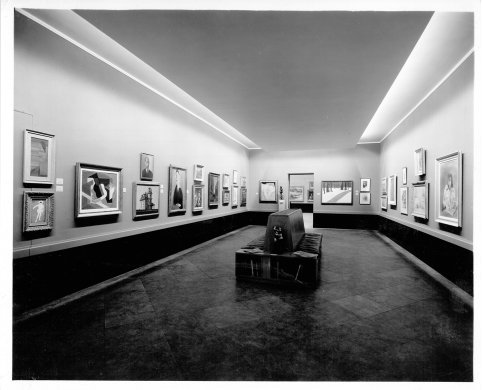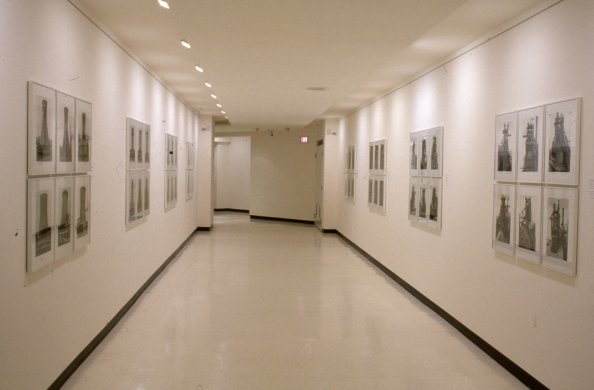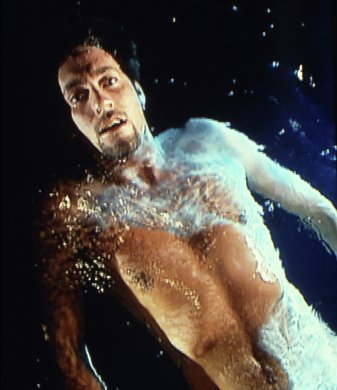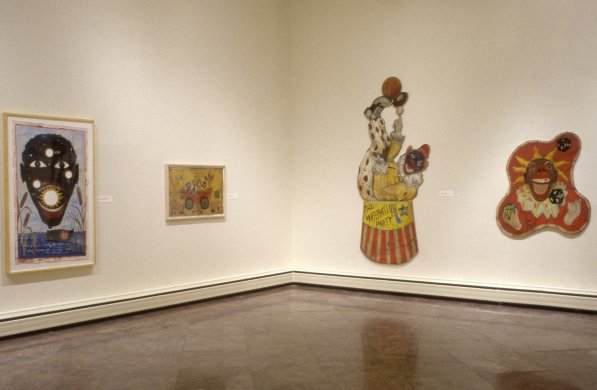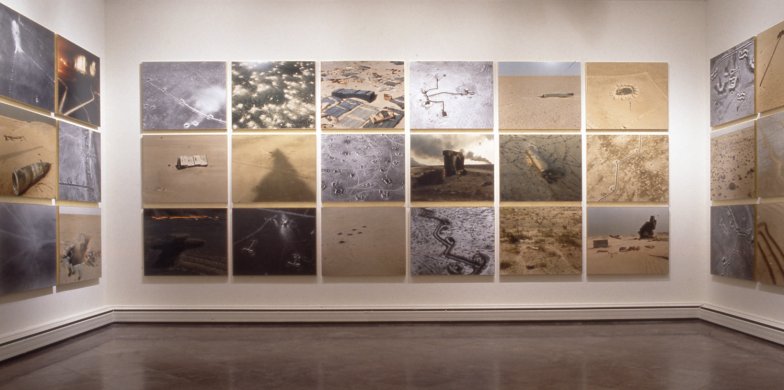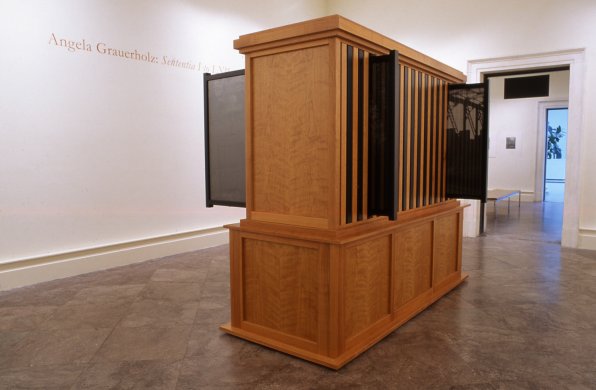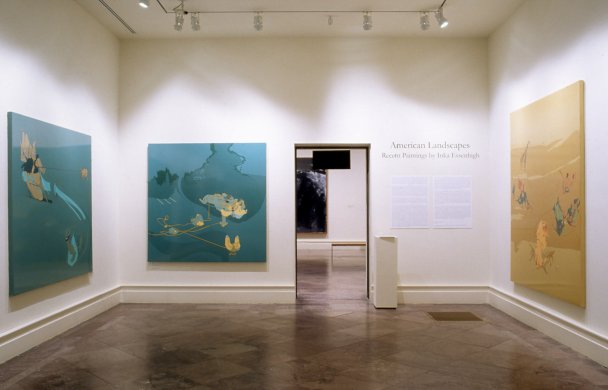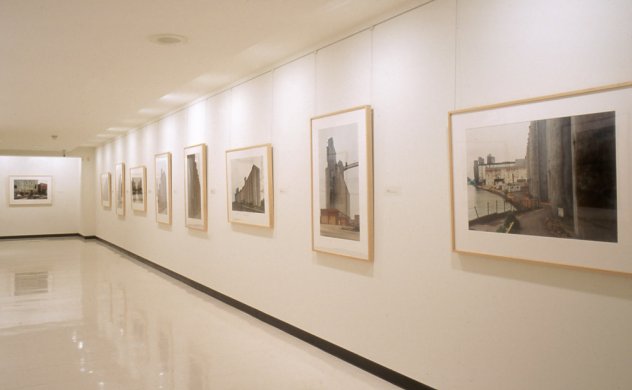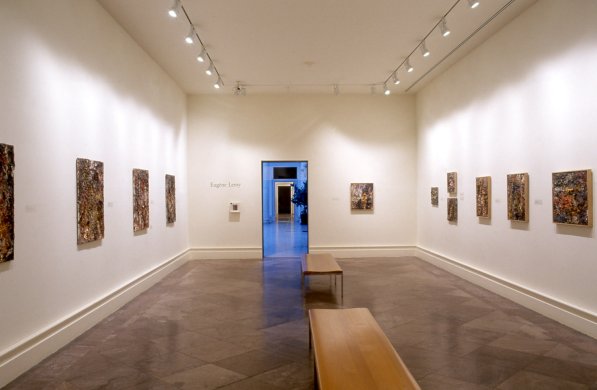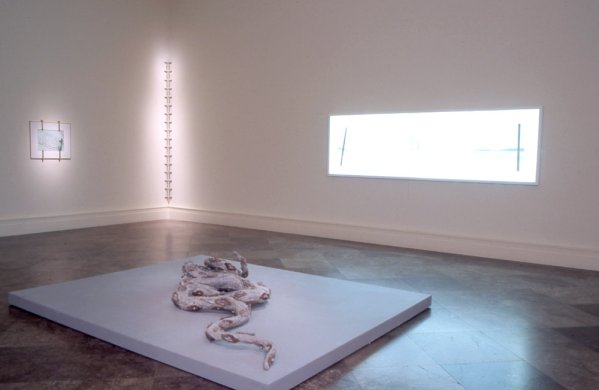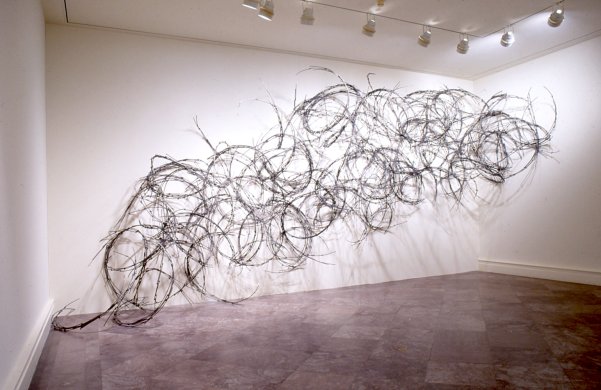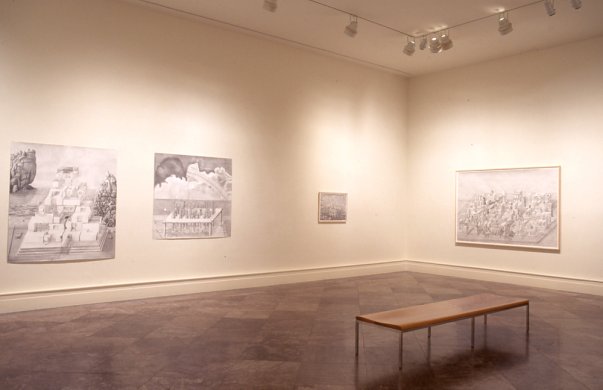Michel Verjux: Light Connection
Saturday, February 15, 1997–Sunday, April 13, 1997
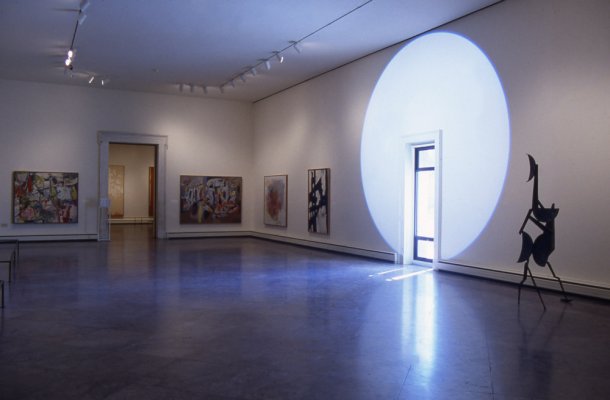
Installation view of Michel Verjux: Light Connection. Photograph by Tom Loonan.
Exterior/Interior of 1905 and 1962 Buildings
Michel Verjux: Light Connection was Verjux’s first project for a North American museum, superimposing five projected circles from (or onto) two buildings of different period and style. One was shown inside the museum during the day in an exhibition gallery devoted to the Albright-Knox’s famous collection of large New York School abstractions. It filled the center of a long wall from floor to ceiling and surrounded the room’s single, narrow window.
At night, two projections shone against the exterior of the same wall, the south façade of E.B. Green’s Greek Revival building of 1905. These lights were trained between the bottom of the wall and the cornice, and they were pushed right to the inside of either wall, overlapping pilasters that frame the long central colonnade. Were one to see the interior projection shine through the colonnade, the three circles that affected the building would appear evenly distributed across the whole façade, one circle-width apart.
Another pair of projections illuminated the “black box” auditorium that crowns Gordon Bunshaft’s 1962 addition. They were placed at the center and shone outward from the east and west glass walls. The curtains normally kept drawn in this space were gathered to one side of either projection while the other side was open, affording the passerby the rare chance to see the room from the outside. Viewers could thereby admire its volume and its interior details of ceiling, stage, piers, and curtains from a new vantage point.
This exhibition was organized by Curator Marc Mayer in conjuction with the New Room of Contemporary Art series.
About the New Room of Contemporary Art
The concept of the New Room of Contemporary Art echoes the mission and philosophy of its predecessor, the Room of Contemporary Art. Established in 1939, the Room was envisioned as a both a physical site devoted solely to the continuously rotating presentation of new art within the museum and a means to reinvigorate and reaffirm the museum’s dedication to collecting the art of its time.
It was managed by a special independent committee initially consisting of Buffalo attorney Philip J. Wickser (who helped to conceive the room and who drafted its charter), Seymour H. Knox, Jr., Albright Art Gallery Director Gordon B. Washburn, and artists Charles E. Burchfield and Anna Glenny Dunbar, both of whom called Buffalo home. Through the Room of Contemporary Art fund, the museum acquired Fernand Léger's La fume (Smoke), 1912; Joan Miró's Carnaval d'Arlequin (Carnival of Harlequin), 1924–25; and Henri Matisse's La Musique (Music), 1939, among many others.
Exhibition Sponsors
The exhibition was made possible, in part, through a grant from Etant Donnés, the French-American Endowment for Contemporary Art and the generous support of the Campos Group.
The exhibition was made possible, in part, through a grant from Etant Donnés, the French-American Endowment for Contemporary Art and the generous support of the Campos Group.
